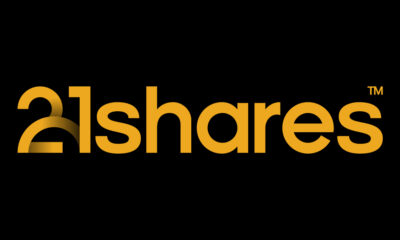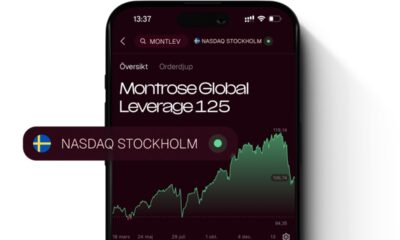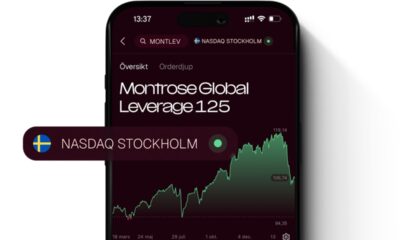Cyber security: Investing in the biggest security story of our time. Cyber security has become a top priority for companies and governments worldwide and it’s easy to see why: the move to digital means that businesses have a greater reliance than ever on the internet for a huge array of functions. And can be seen from the almost daily reports of security breaches and high profile attacks, no individuals, businesses or even governments are safe. In the last year alone, we have witnessed cyber attacks on organisations of every kind, from US political parties to UK mobile phone operators.
Senior executives, rather than back-office IT teams, now have ultimate responsibility for protecting networks, data and internet-enabled devices. As a result, cyber security has become big business: an estimated $1 trillion globally will be spent on cyber security products and services between 2017 and 2021. The risk of cyber attacks has also been heightened by the growing number of internet-connected devices globally. It is expected that 200 billion smart devices will be in use by 2020.
With cyber security now a megatrend, how can investors access this growing sector?
What is cyber security?
First and foremost, the cyber security industry is not a single discipline – it involves the expertise of companies in a range of sectors, including software development, communications equipment, advisory firms and aerospace and defence companies. There is no single way companies can keep their networks, devices and data secure: training staff to look out for bogus emails is as important as keeping software up to date and encrypting the most sensitive data.
The overall goal of cyber security is to protect computer networks, programs, connected devices such as desktop computers and smartphones, and the data they hold, from unauthorised access and theft. This could be a deliberate and/or malicious attack by a cyber criminal looking to steal data to sell, a hacker looking to cause mischief or a business rival or nation state looking for sensitive information. It could also be an innocent mistake; 17.7 per cent of data breaches were caused by unintentional actions or errors, according to 2016 research by Verizon.
The cyber threat is real – and companies are spending money to tackle it
One of the unique aspects of cyber security is that cyber threats are constantly evolving: as systems and devices evolve, would-be attackers are developing loopholes to exploit them. The number of cyber threats affecting businesses reached an all-time high in 2016, including a 752 per cent jump in the varieties of ransomware seen by security experts, according to Trend Micro research.
High-profile cyber attacks are illustrative of the potential damage cyber attacks can have on a company’s reputation, revenue and future growth prospects. Yahoo last year disclosed two breaches, one affecting more than 1 billion accounts and the second around 500 million users.5 These breaches resulted in US criminal charges and caused Verizon to abandon its takeover bid of Yahoo for $350 million. In the UK, internet service provider TalkTalk had to pay a record £400,000 fine after the personal details of 150,000 customers were accessed by a cyber-attack. In the political sphere, it is alleged that Russian hackers targeted senior Democratic party figures as part of efforts to influence the outcome of last year’s US presidential election.
IDC forecasts a compound annual growth rate (CAGR) of 8.3 per cent for the cyber security industry, more than twice the rate of overall IT spending growth, between 2016 and 20207. Within cyber security, the largest areas of growth will be mobile security, Internet of Things (IoT) security, and specialised threat analysis and protection, according to Bloomberg and IDC.
How can investors access the cyber security megatrend?
Cyber security, and the organisations and products that companies use to combat the threat, will become increasingly important: regulatory requirements on data protection and privacy are set to increase, and the expansion of the Internet of Things means more objects, from phones to fridges, will have an internet connection and produce data that will need to be secured.
Governments are also making it a priority: Philip Hammond, UK Chancellor of the Exchequer, has set up the National Cyber Security Strategy, underpinned by a £1.9 billion investment, and President Trump in the US is expected to sign an executive order on cyber security in the spring.
All these elements mean businesses are likely to allocate bigger budgets to cyber security. However it is too early in the life of the cyber security megatrend to clearly identify any winners: there are many competing technologies addressing the ever-evolving threat, including the work of start-ups that haven’t yet secured patents. These smaller companies are offering innovative technologies and products, and venture capital firms invested around $8 billion in cyber security companies between 2014 and 2016. Additionally, trying to pick individual stocks among companies at such an early stage exposes investors to a higher degree of volatility than they may wish to take on.
Investment exposure to the cyber security industry therefore requires a passive approach. A global and diversified exposure can give investors access to all the elements spurring growth of the cyber security space. Typically, smaller and midcap companies have been offering the most innovative technologies and products, and so any exposure should ideally capture these players. Finally, in order to remain true to the theme, an equal-weight portfolio ensures end-to-end exposure to the whole ecosystem of companies and provides exposure to the companies that will be tomorrow’s winners.
For more information, visit etfsecurities.com/cyber
Important Information
This communication has been issued and approved for the purpose of section 21 of the Financial Services and Markets Act 2000 by ETF Securities (UK) Limited (“ETFS UK”) which is authorised and regulated by the United Kingdom Financial Conduct Authority (the “FCA”). While this communication is made by ETFS UK, certain content has been produced and provided for ETFS UK by ROBO Global Partners Ltd. (“ROBO Global®”). ROBO Global® is an independent, unaffiliated third party to ETFS UK. No forwarding, reprinting, republication or any other redistribution of this content is permissible without the express consent of ROBO Global® and ETFS UK. ROBO Global® and ETFS UK reserve the right to enforce their respective copyrights and pursue any such other action as they deem appropriate in respect of any such unauthorised use, republication or redistribution of this communication.
The information contained in this communication is for your general information only and is neither an offer for sale nor a solicitation of an offer to buy securities. This communication should not be used as the basis for any investment decision. Historical performance is not an indication of future performance and any investments may go down in value.
This document is not, and under no circumstances is to be construed as, an advertisement or any other step in furtherance of a public offering of shares or securities in the United States or any province or territory thereof. Neither this document nor any copy hereof should be taken, transmitted or distributed (directly or indirectly) into the United States.
This communication may contain independent market commentary prepared by ETFS UK based on publicly available information. Although ETFS UK endeavours to ensure the accuracy of the content in this communication, ETFS UK does not warrant or guarantee its accuracy or correctness. Any third party data providers used to source the information in this communication make no warranties or representation of any kind relating to such data. Where ETFS UK has expressed its own opinions related to product or market activity, these views may change. Neither ETFS UK, nor any affiliate, nor any of their respective officers, directors, partners, or employees accepts any liability whatsoever for any direct or consequential loss arising from any use of this publication or its contents.
ETFS UK is required by the FCA to clarify that it is not acting for you in any way in relation to the investment or investment activity to which this communication relates. In particular, ETFS UK will not provide any investment services to you and or advise you on the merits of, or make any recommendation to you in relation to, the terms of any transaction. No representative of ETFS UK is authorised to behave in any way which would lead you to believe otherwise. ETFS UK is not, therefore, responsible for providing you with the protections afforded to its clients and you should seek your own independent legal, investment and tax or other advice as you see fit.

 Nyheter4 veckor sedan
Nyheter4 veckor sedan
 Nyheter3 veckor sedan
Nyheter3 veckor sedan
 Nyheter4 veckor sedan
Nyheter4 veckor sedan
 Nyheter3 veckor sedan
Nyheter3 veckor sedan
 Nyheter3 veckor sedan
Nyheter3 veckor sedan
 Nyheter3 veckor sedan
Nyheter3 veckor sedan
 Nyheter3 veckor sedan
Nyheter3 veckor sedan
 Nyheter2 veckor sedan
Nyheter2 veckor sedan

























